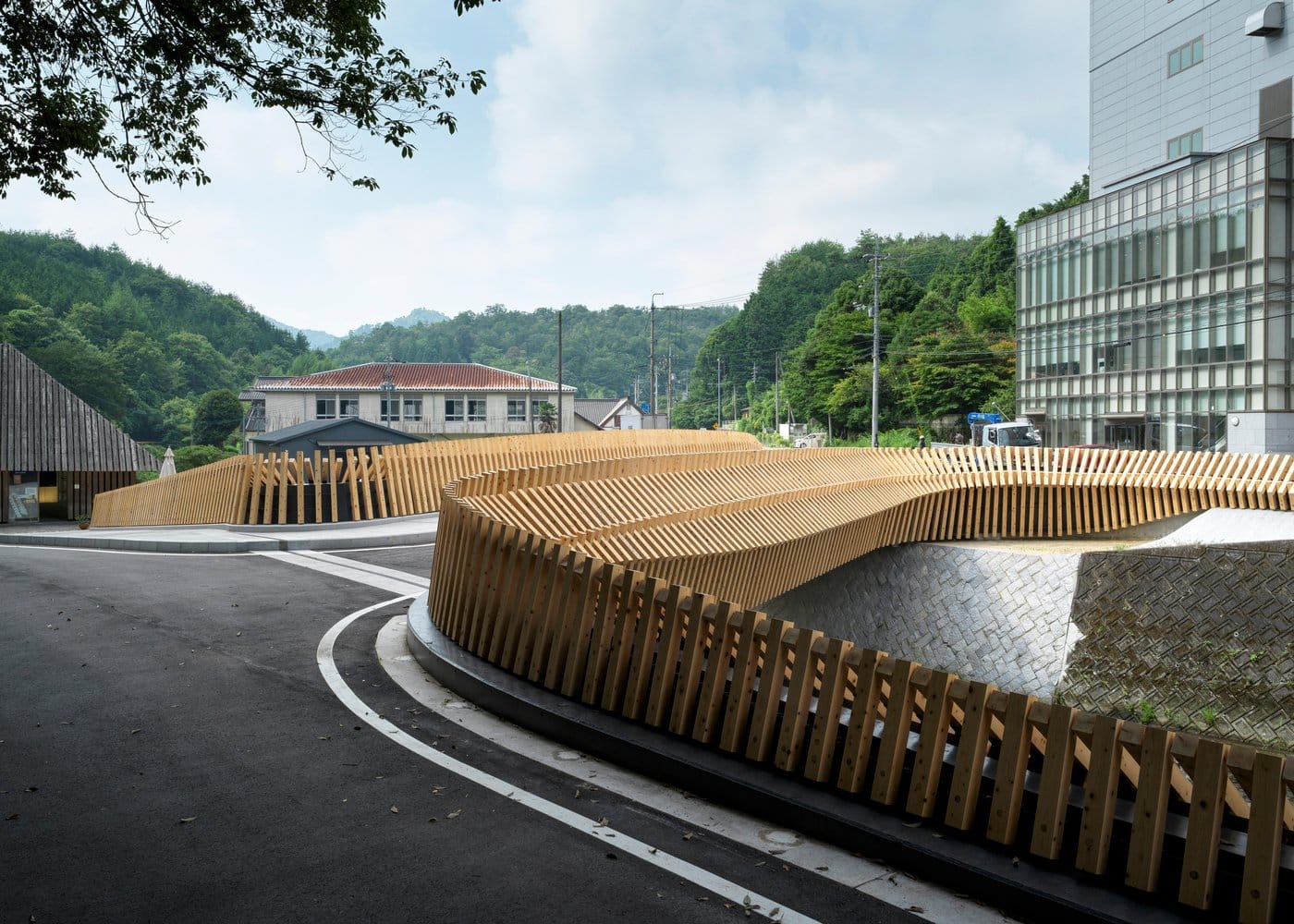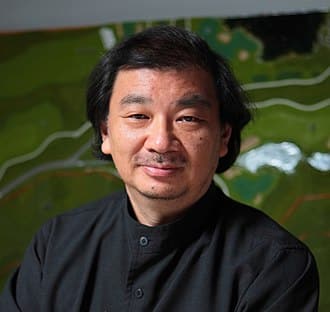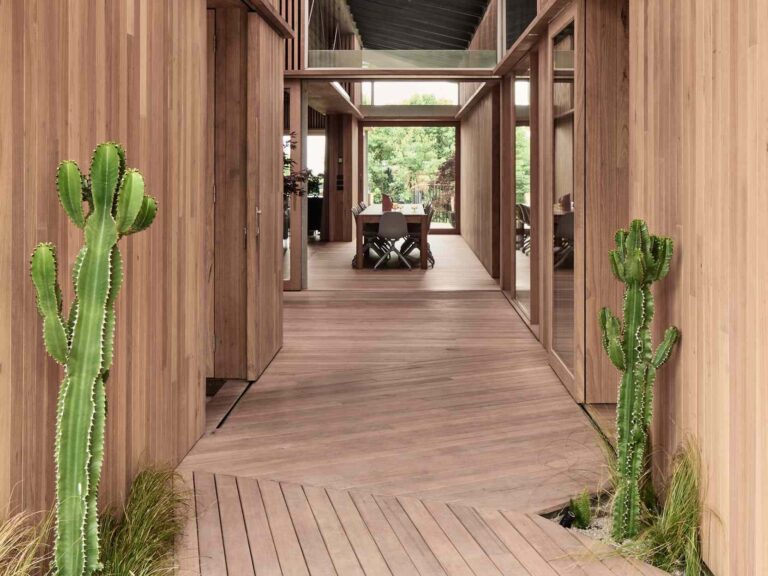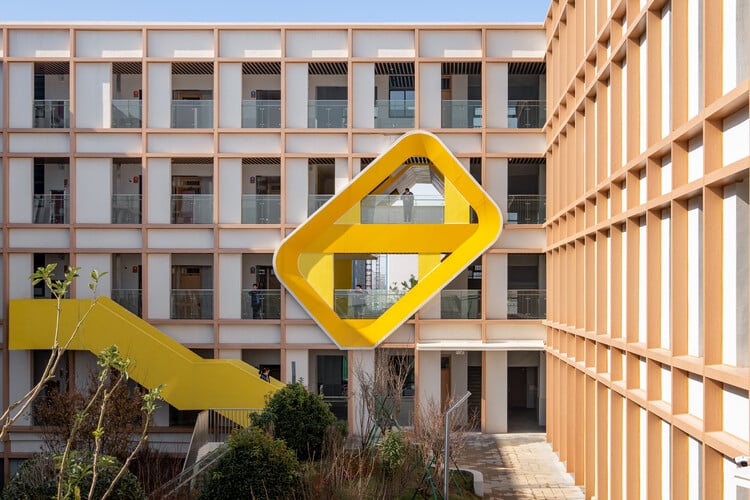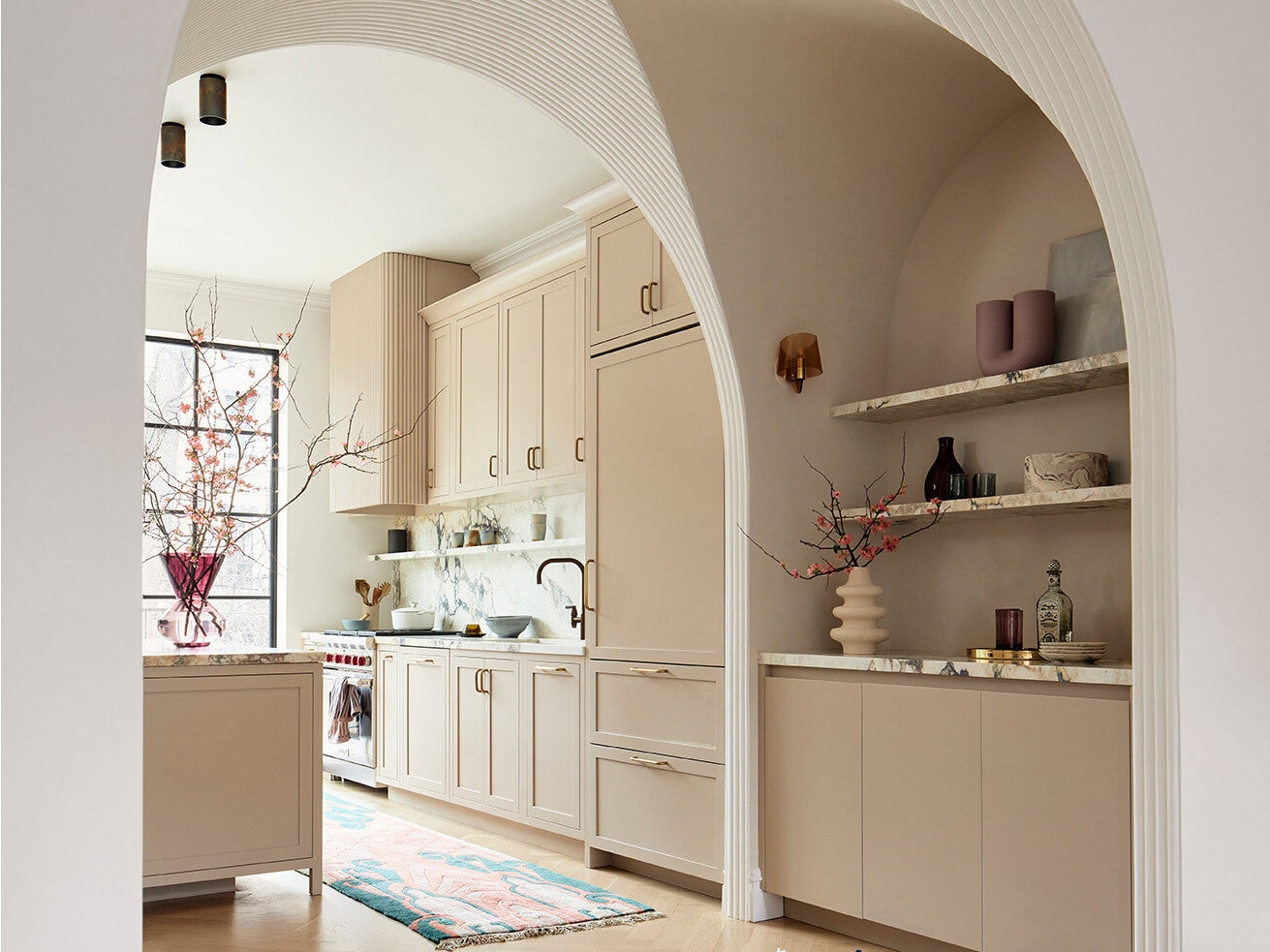Rebuilding Resilience: Kusugibashi Bridge by Kengo Kuma & Associates
A Symbol of Community and Tradition in Post-Disaster Japan
Project Overview
In July 2018, catastrophic floods in western Japan destroyed the original Kusugibashi Bridge in Shūtō Town, Iwakuni City. Rebuilt in 2022 by Kengo Kuma & Associates, the new bridge stands as a testament to communal resilience and innovative design. Funded through donations by Asahi-Shuzo Brewery (makers of the famed Dassai sake), the structure harmonizes traditional Japanese craftsmanship with cutting-edge computational design, creating a landmark that bridges past and future.

Design Philosophy: Where Tradition Meets Innovation
The bridge’s design ingeniously fuses a reinforced concrete (RC) frame with 105 square cypress balustrades, a nod to standardized Japanese woodworking dimensions. The gentle curvature of the balustrades mirrors the surrounding mountain ranges, evoking a sense of organic unity with the landscape. This approach not only addresses disaster resilience but also imbues the structure with a rare humanistic warmth, uncommon in conventional civil engineering.
Key design highlights:
- Materiality: Locally sourced cypress wood, celebrated for its durability and cultural significance.
- Aesthetic Flow: Computational design ensures the balustrades’ curves align with natural topography.
- Community Ties: The project was crowdfunded by a local sake brewery, embedding it in the town’s social fabric.

Technical and Cultural Significance
- Disaster-Proof Engineering: The RC frame ensures stability against future floods, while the lightweight wood reduces structural load.
- Cultural Preservation: The use of traditional 105-square wood members reflects Japan’s carpentry heritage.
- Modern Techniques: Parametric modeling allowed precise alignment of the balustrades’ curves, achieving both visual poetry and structural efficiency.

Photography
Captured by Katsumasa Tanaka, the images highlight the bridge’s dialogue with its environment—nestled near the Dassai sake brewery, it becomes a physical metaphor for renewal. The warm wood tones contrast subtly with the industrial RC frame, symbolizing balance between tradition and progress.

Location & Legacy
Address: 2128 Shūtōmachi Osogoe, Iwakuni, Yamaguchi Prefecture, Japan
The bridge transcends its functional role, becoming a pilgrimage site for architects and locals alike—a marker of how design can heal and inspire.
✦ ArchUp Editorial Insight
The Kusugibashi Bridge exemplifies how architecture can transform trauma into hope, blending technical rigor with emotional resonance. While its design succeeds in symbolizing resilience, one might critique the reliance on corporate patronage (like Asahi-Shuzo) as a model for public infrastructure raising questions about scalability in less affluent communities. Yet, the project’s true brilliance lies in its tactile humanity; the cypress balustrades invite touch, and the curves slow pedestrians down, fostering mindfulness. In an era of sterile infrastructure, Kuma’s bridge reminds us that even utilitarian structures can carry profound cultural narratives, marrying utility with soul.
Explore More with ArchUp
ArchUp documents the evolving profession of architects worldwide, from career insights and research to project profilesand industry news. Our editorial team publishes global salary trends, career advice, and opportunities for emerging talents. Learn more on our About page or Contact us to collaborate.

